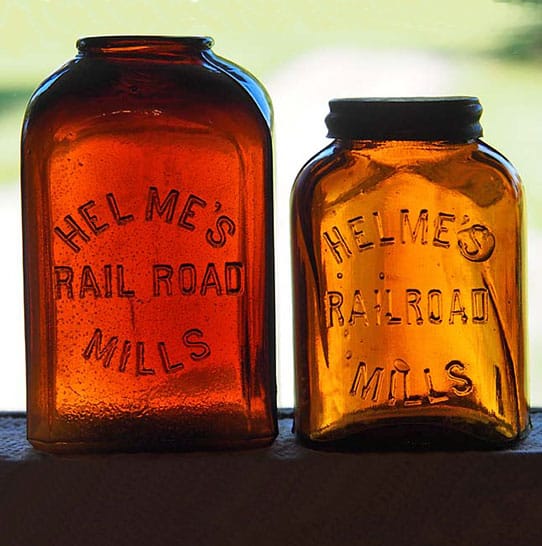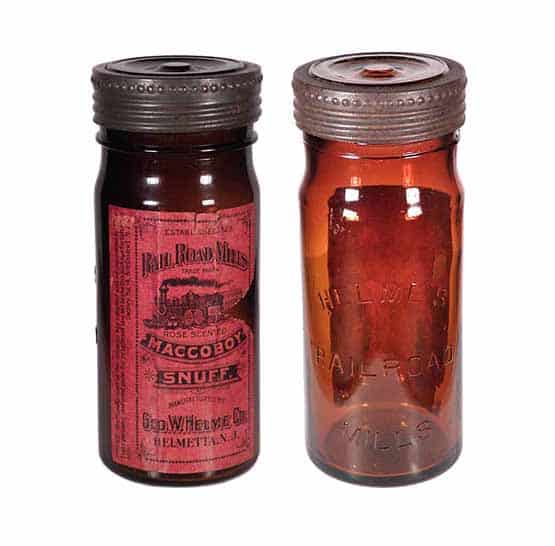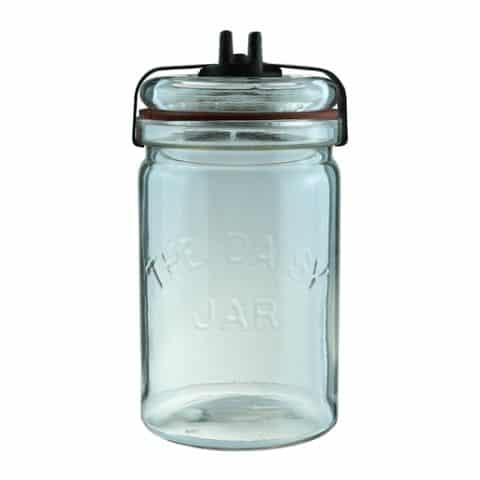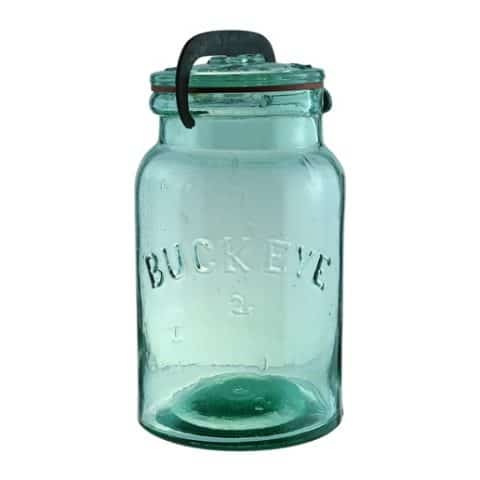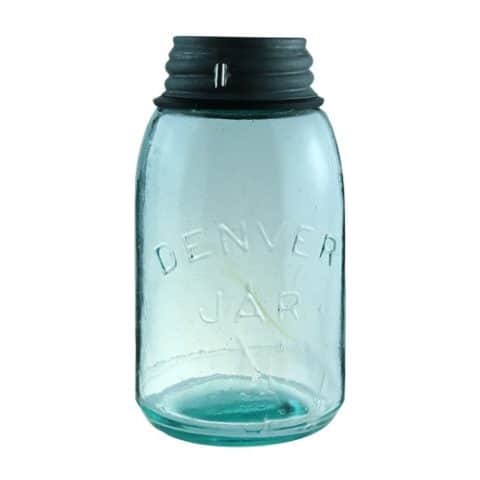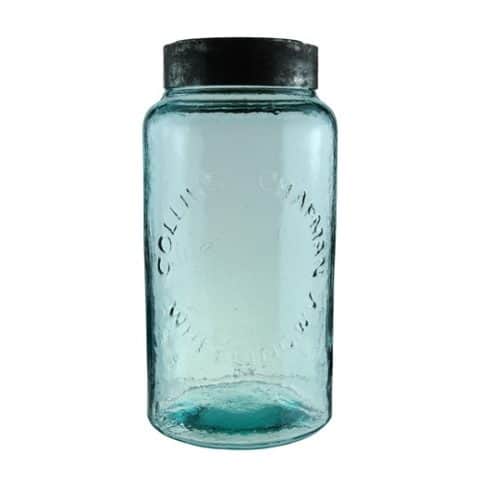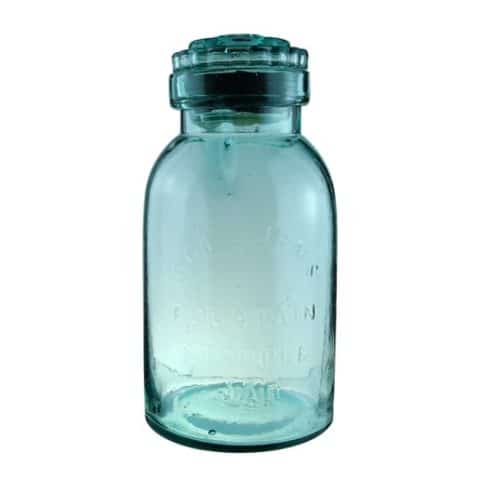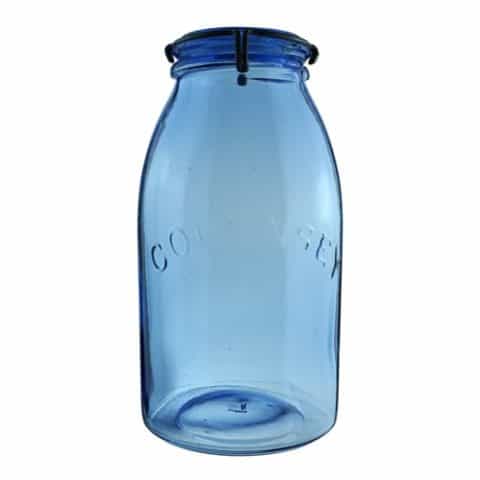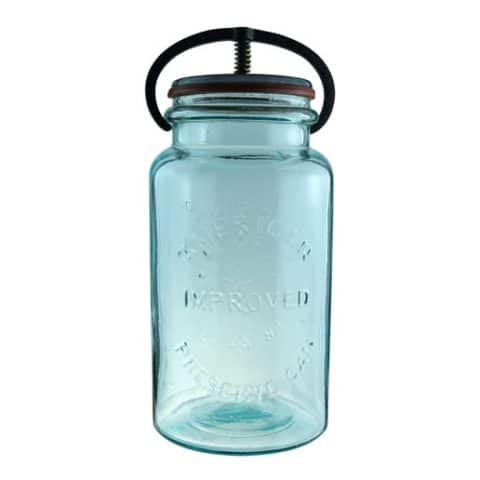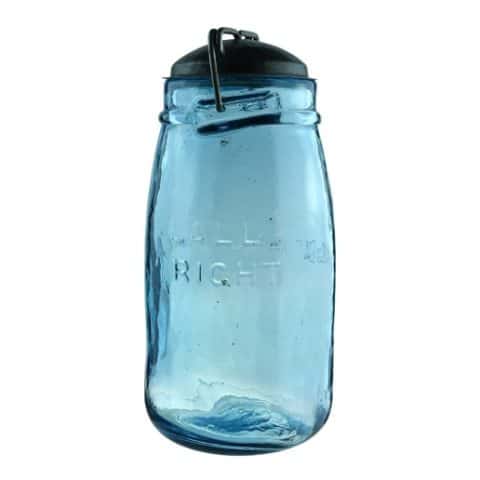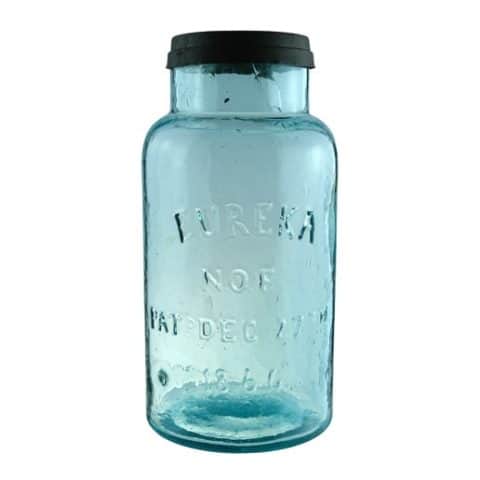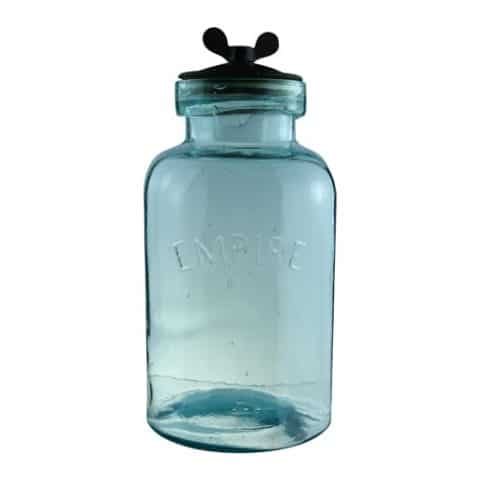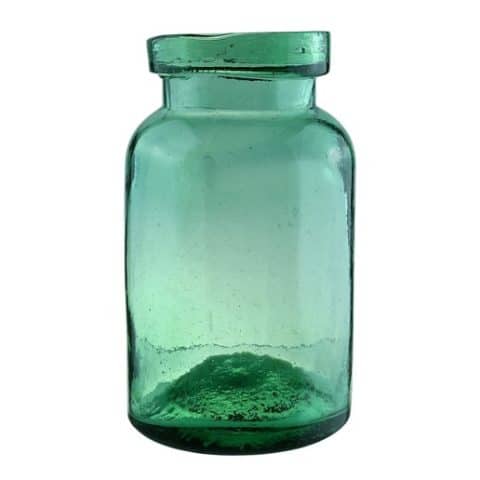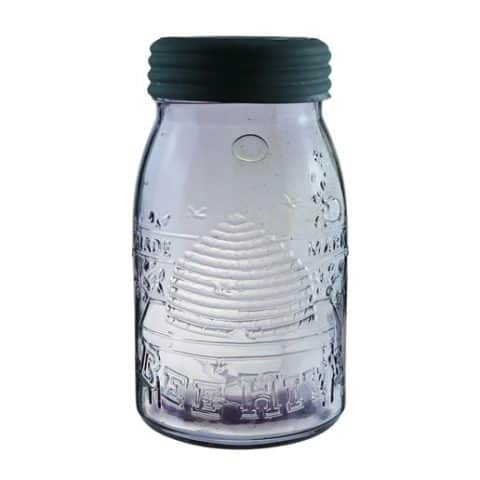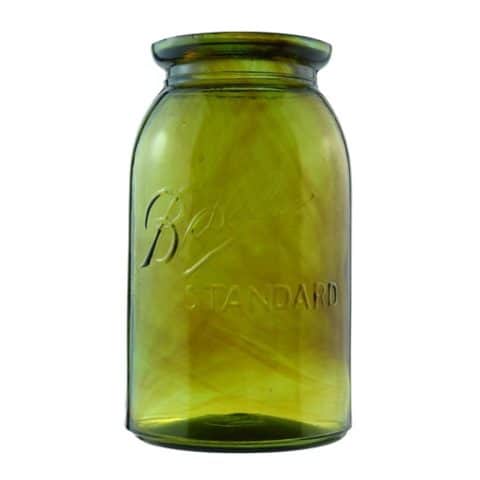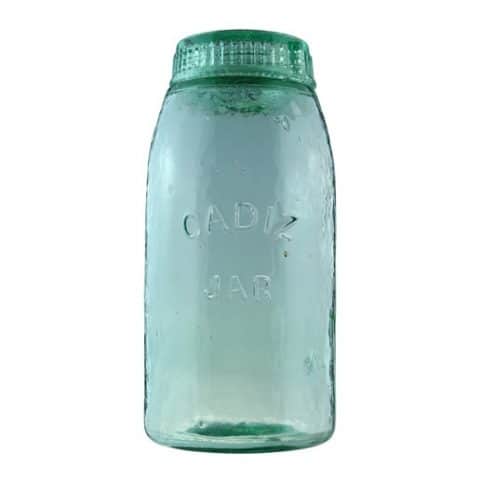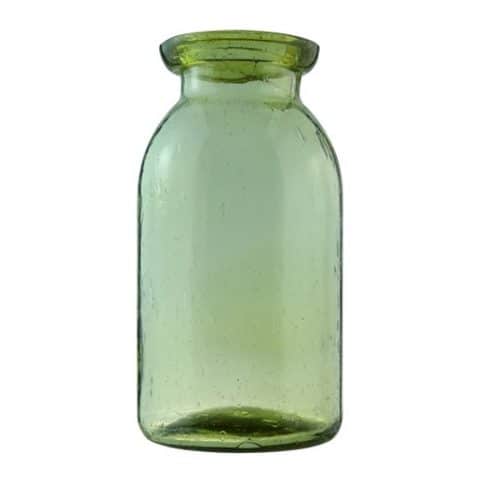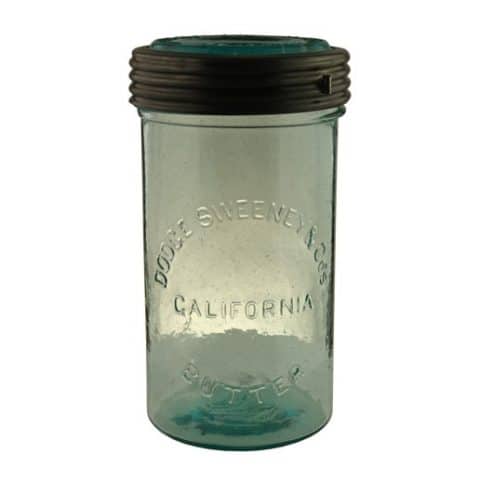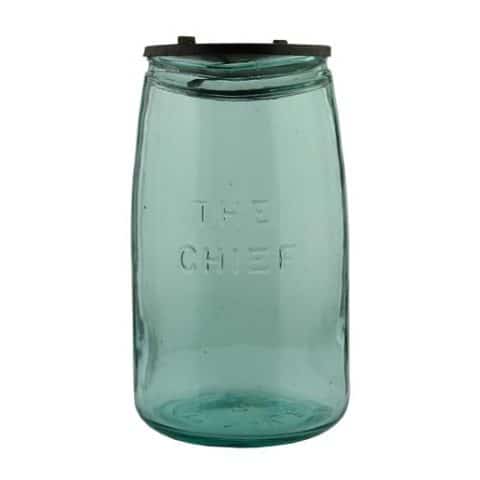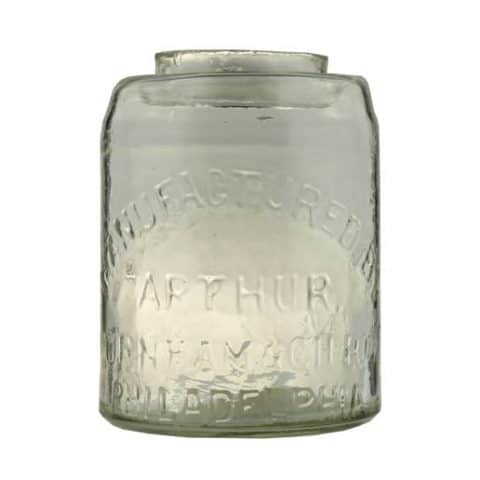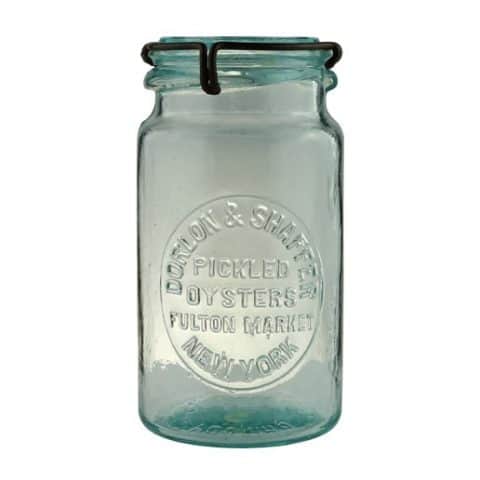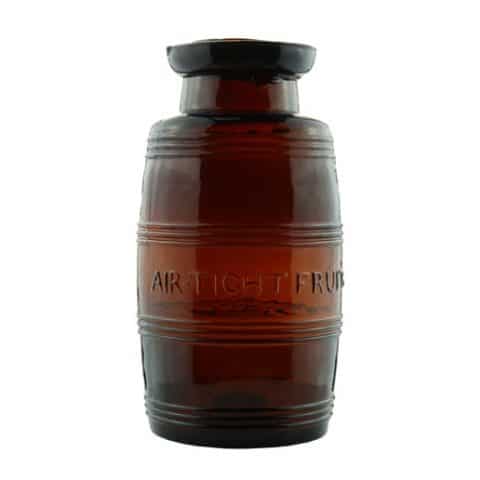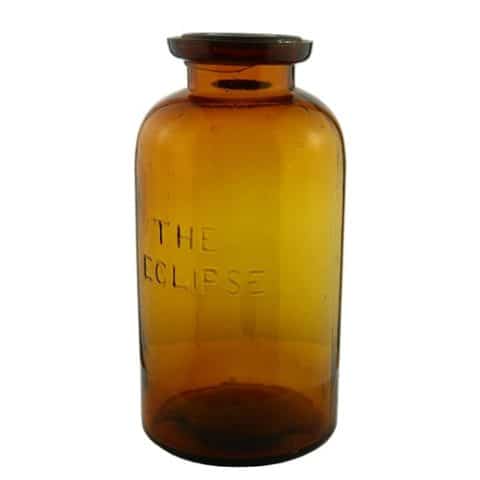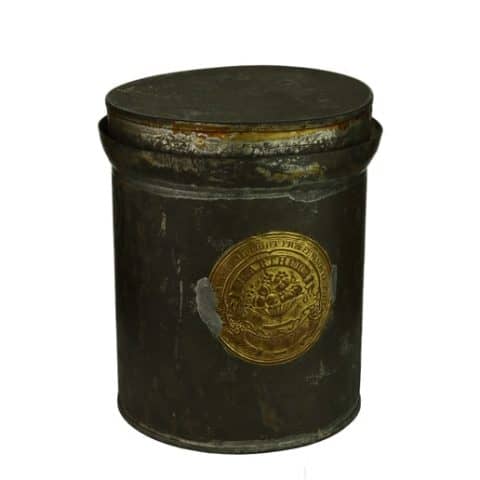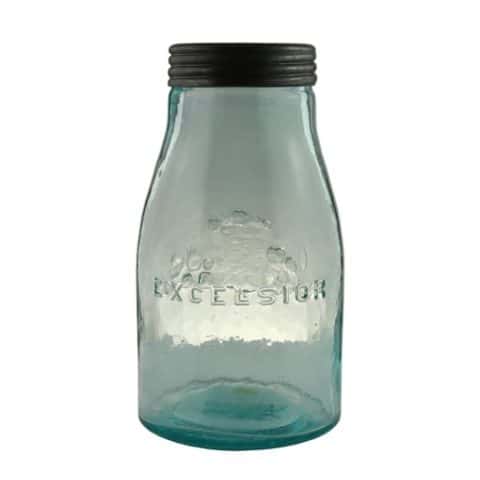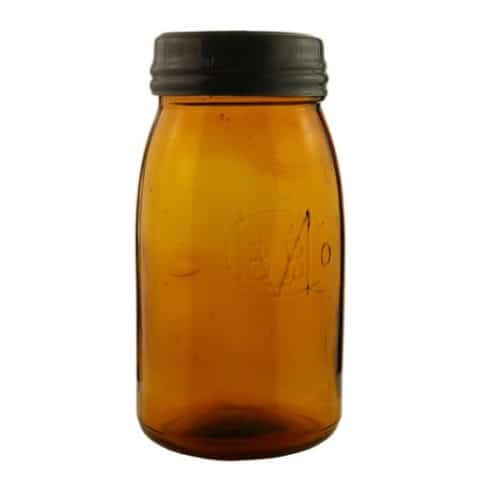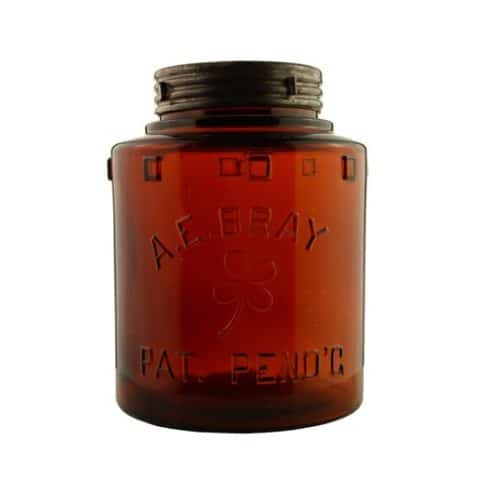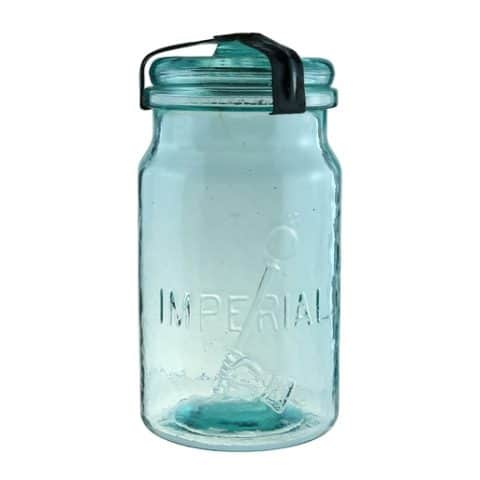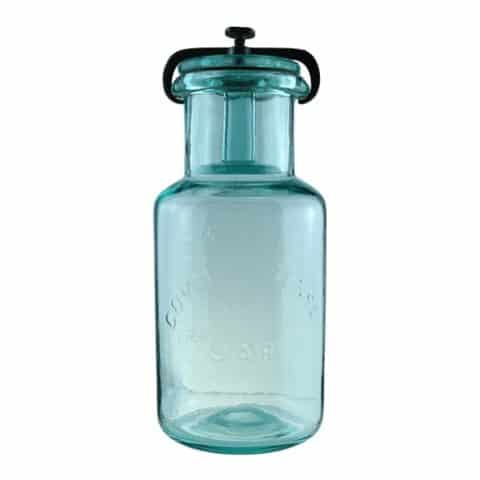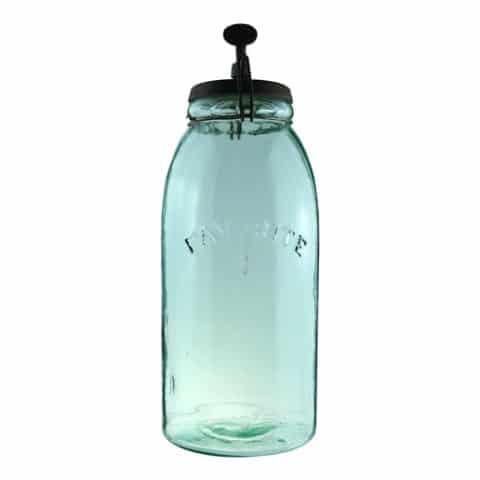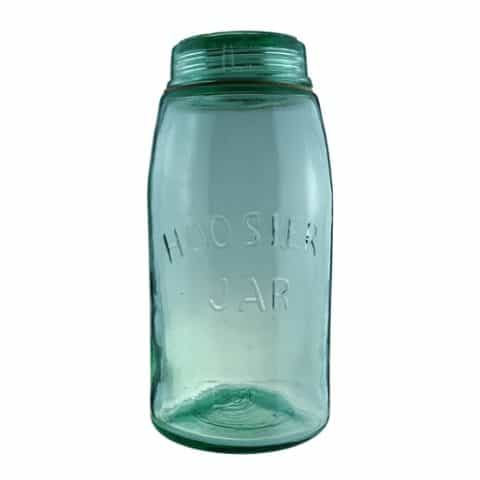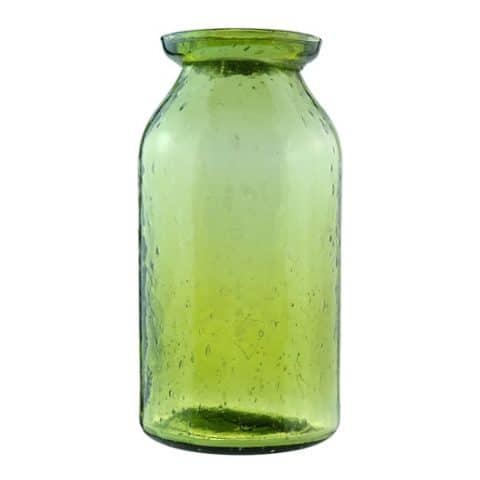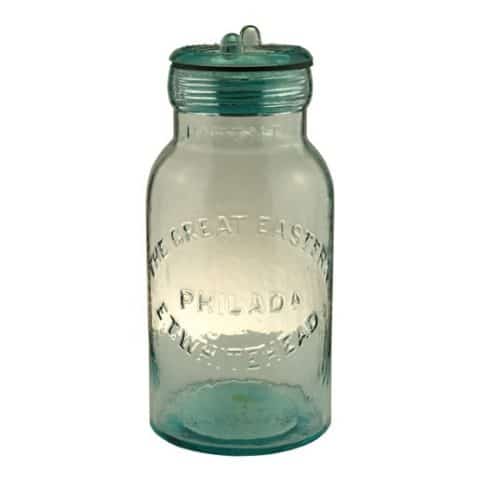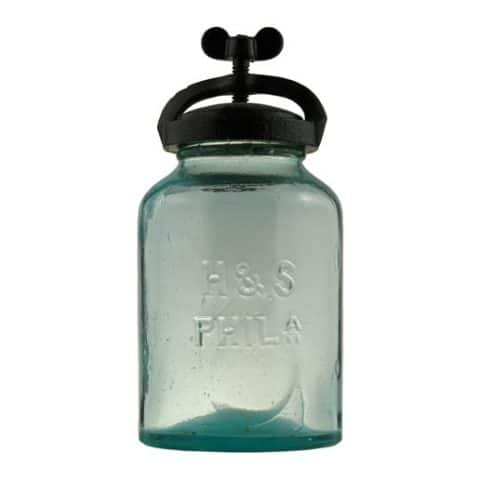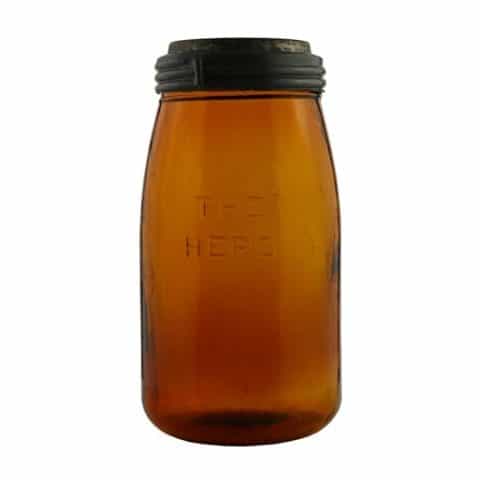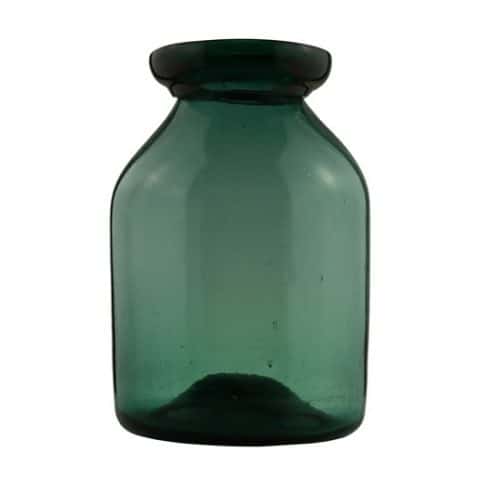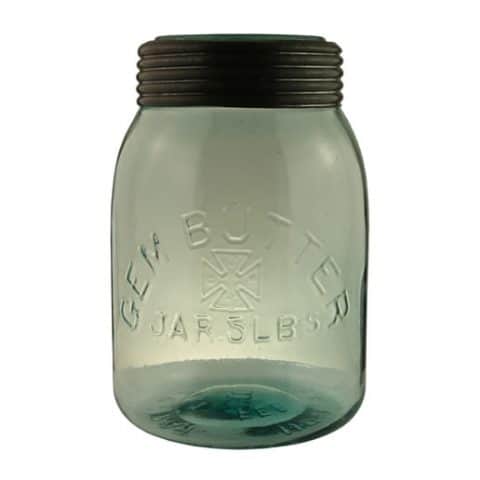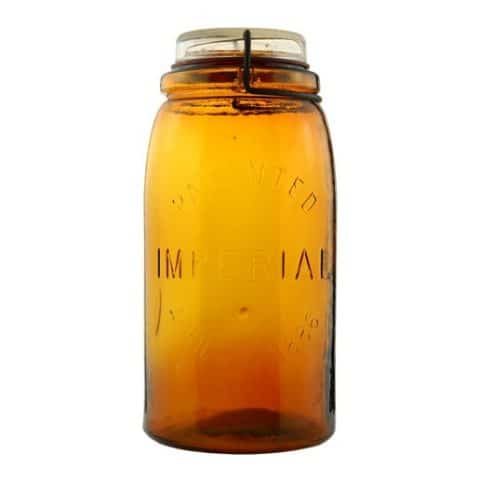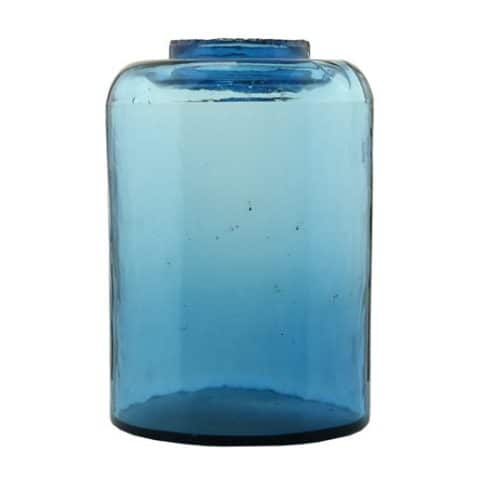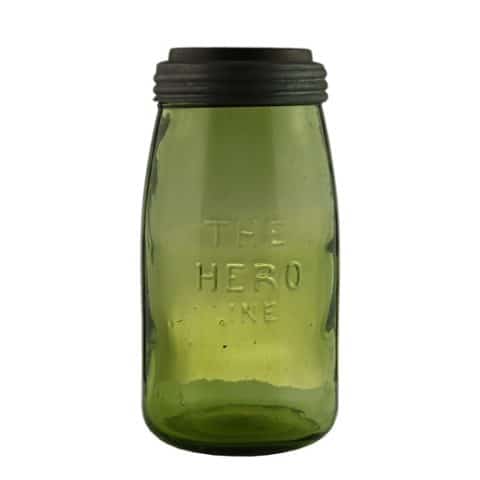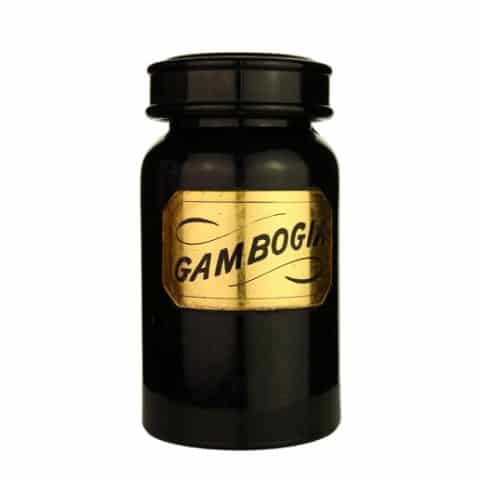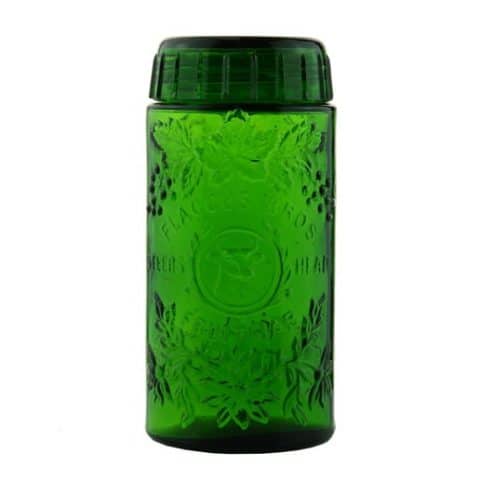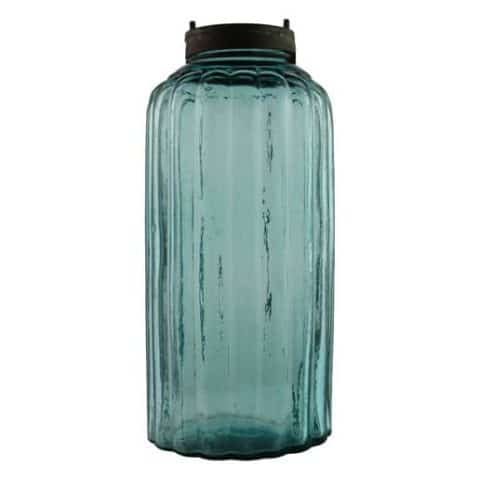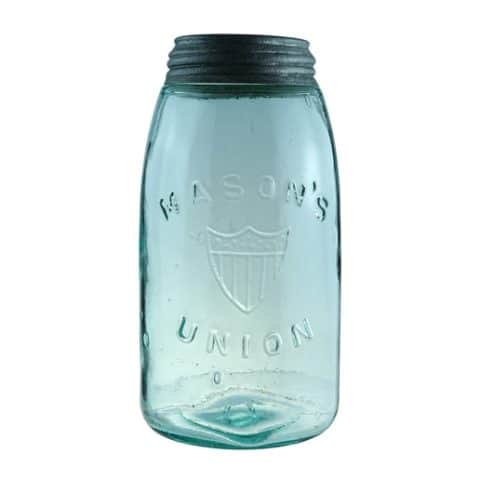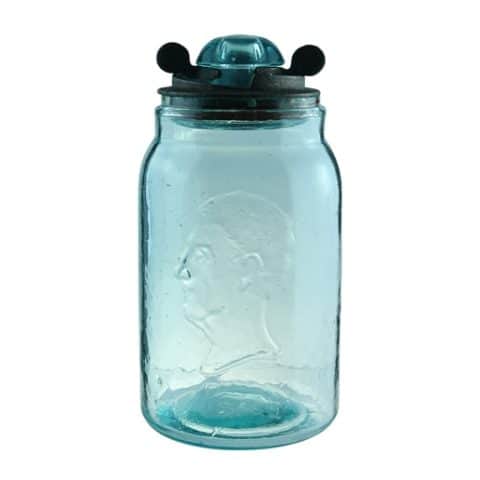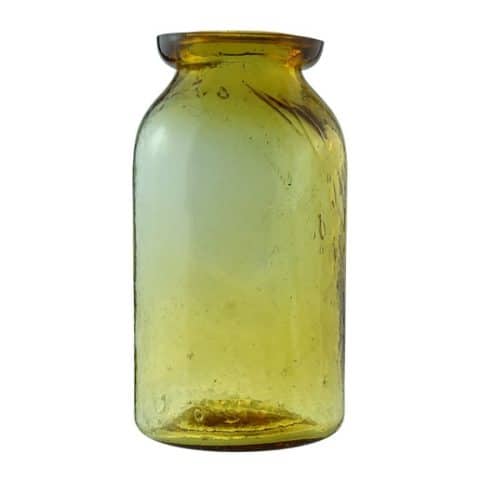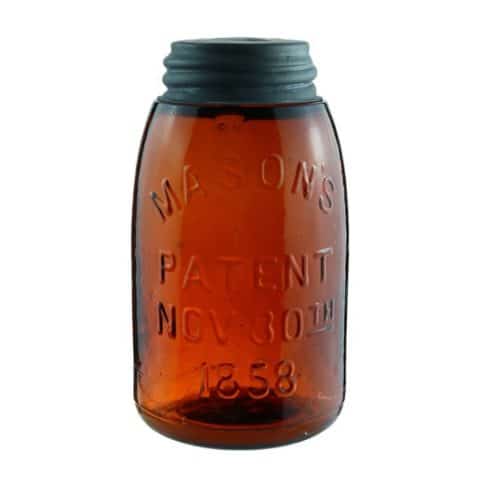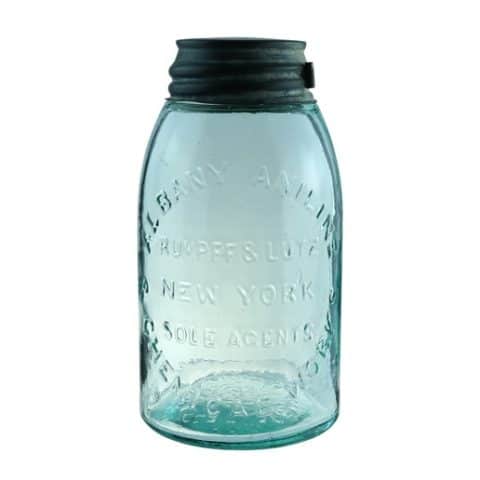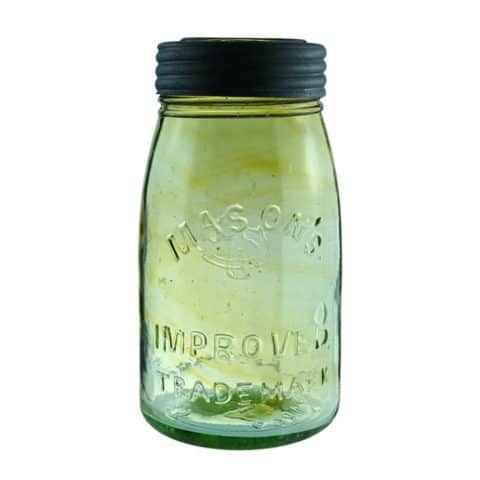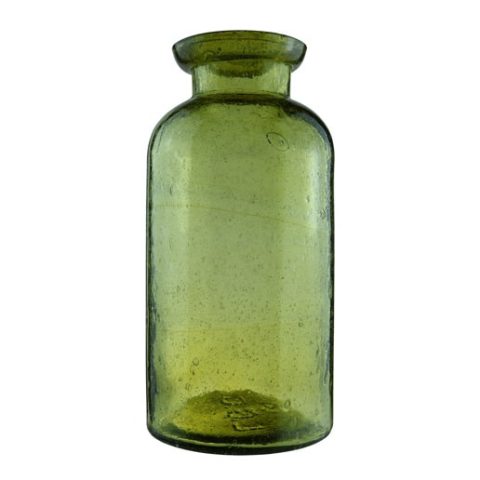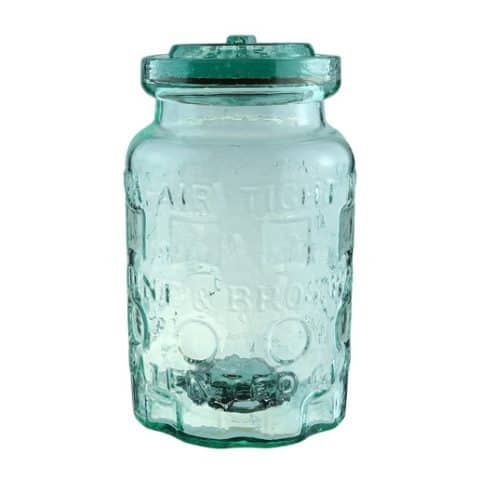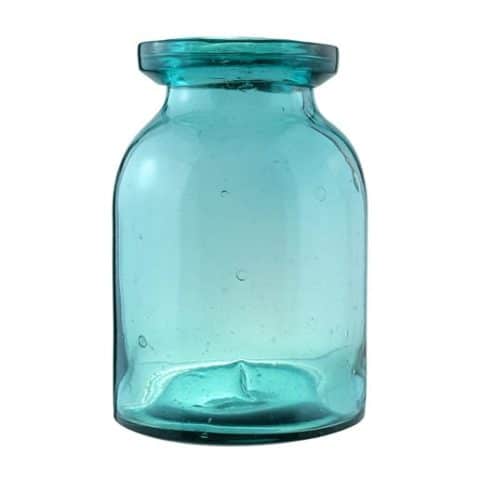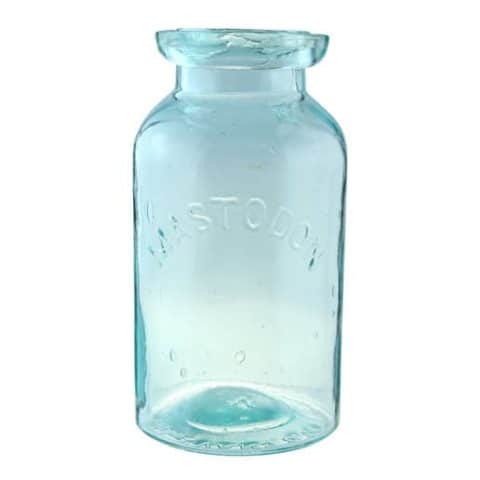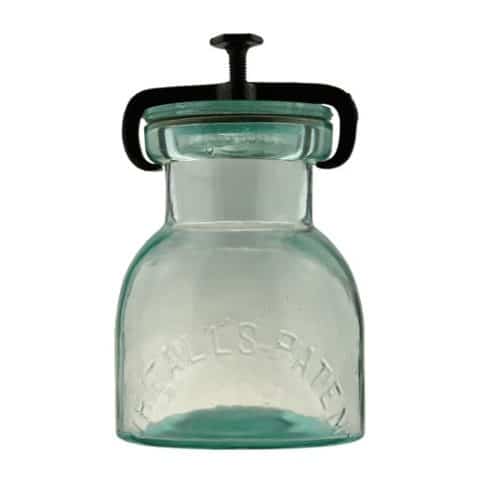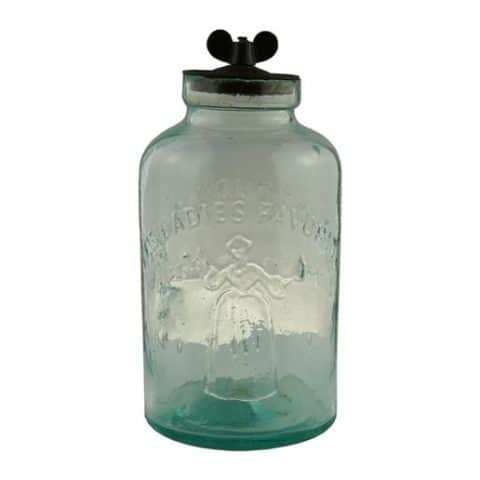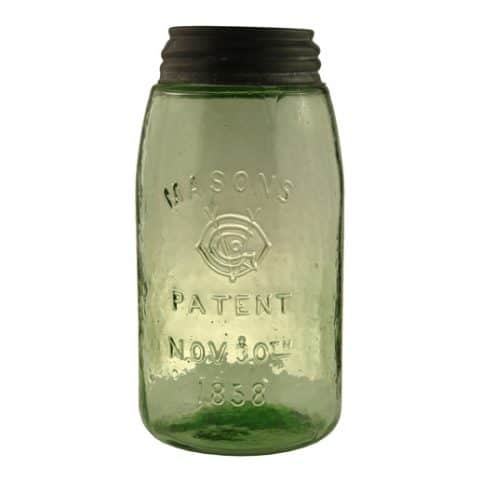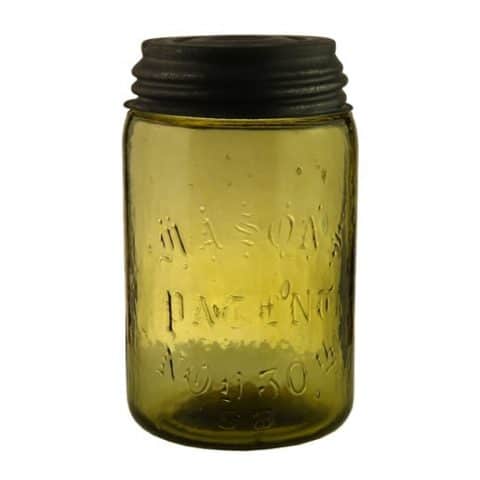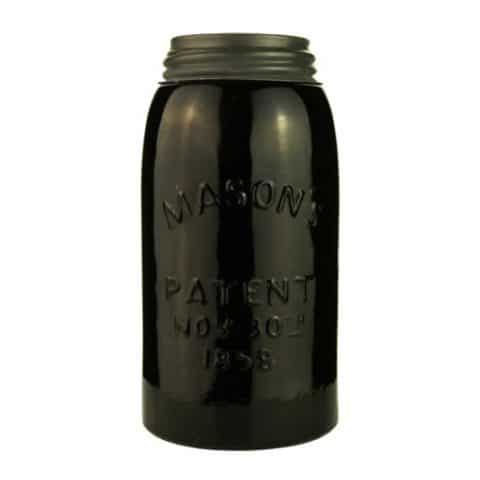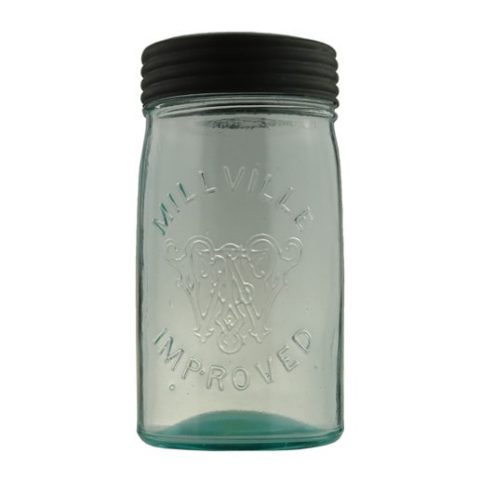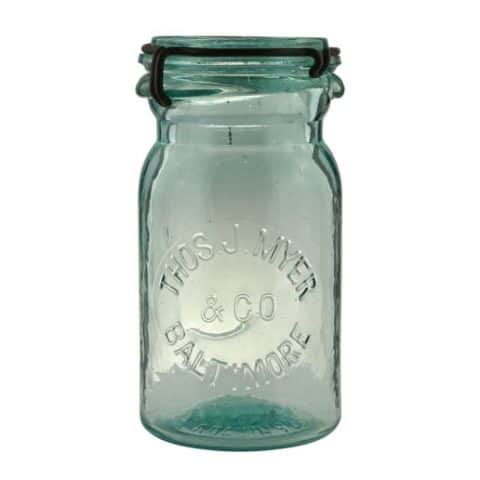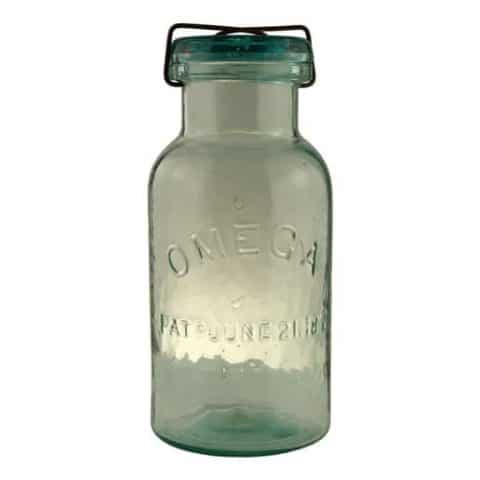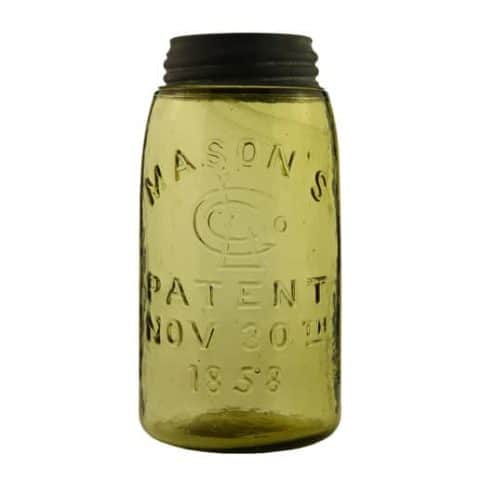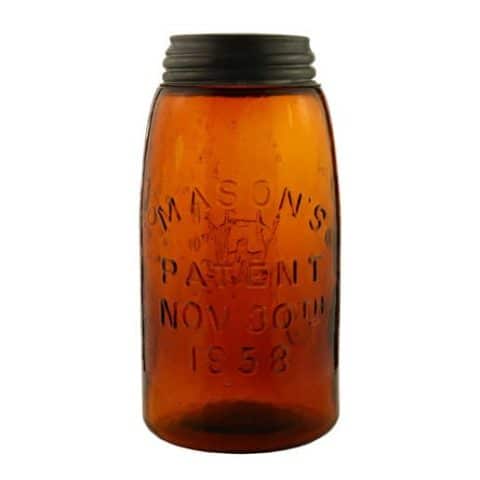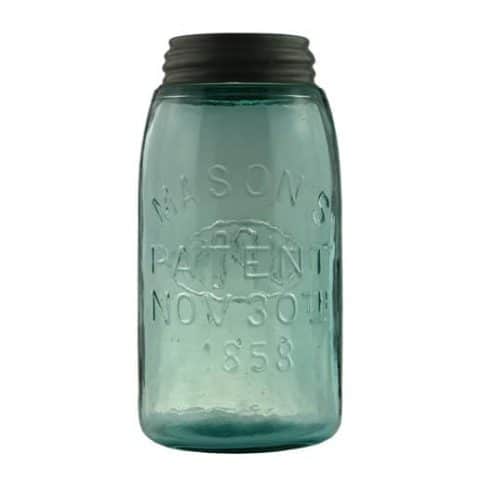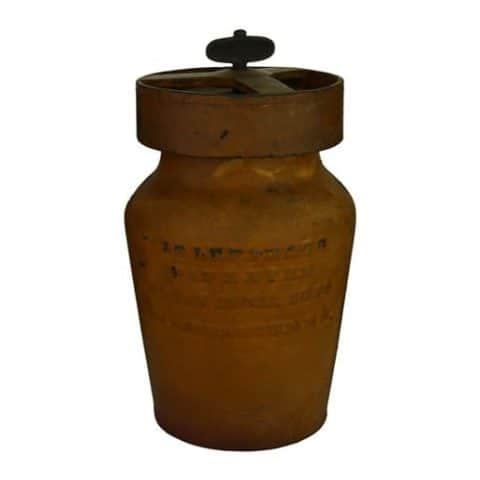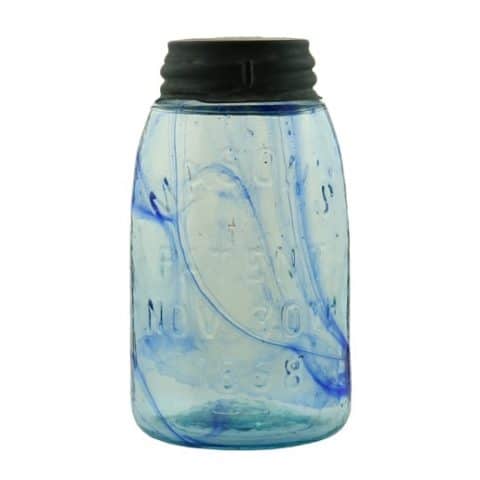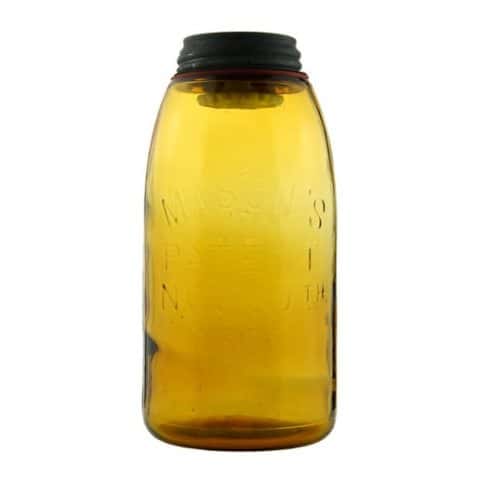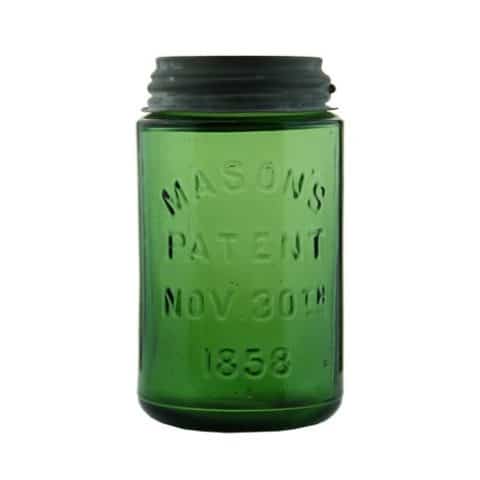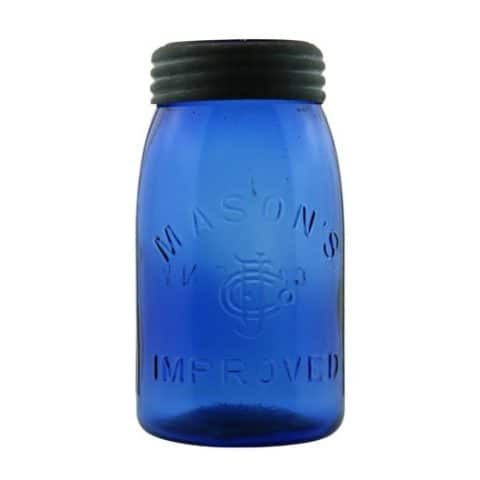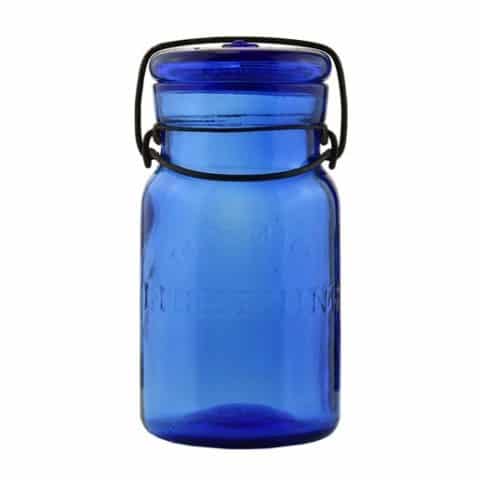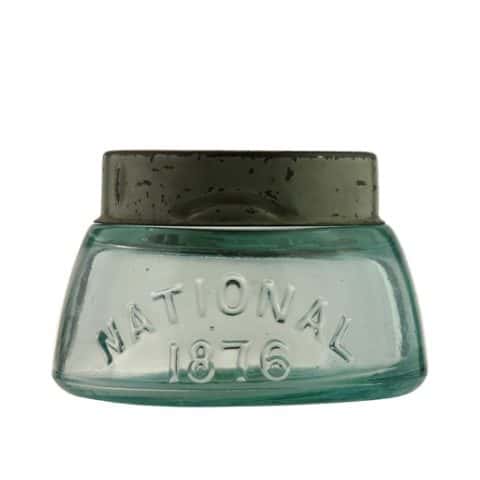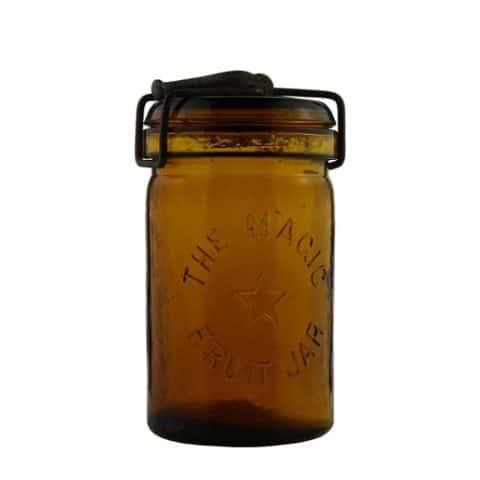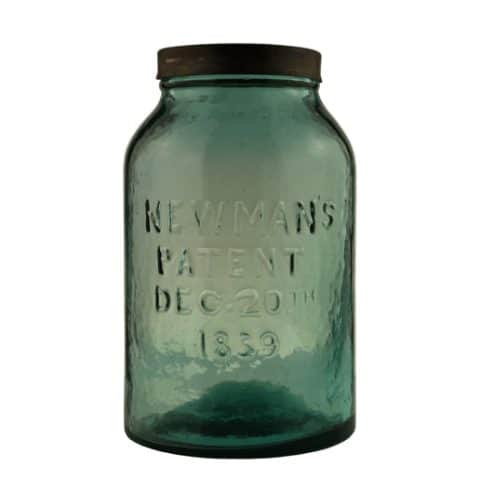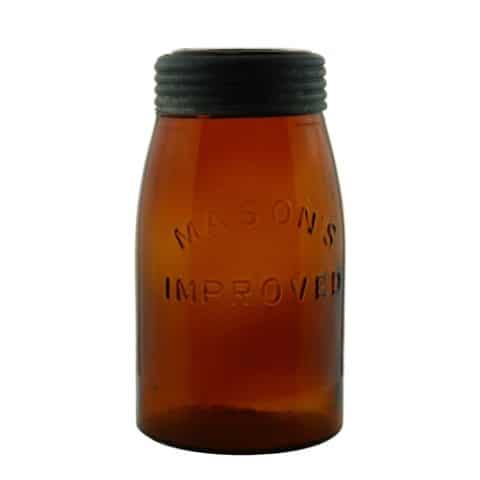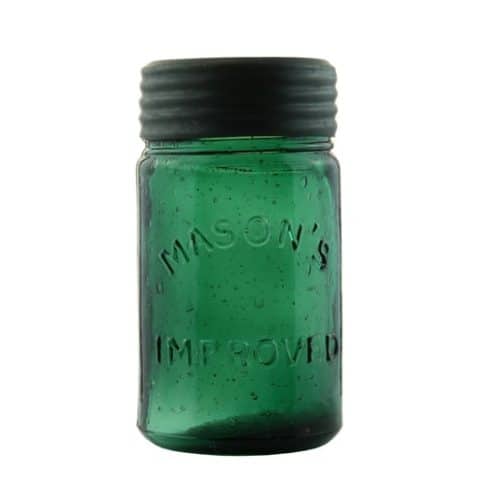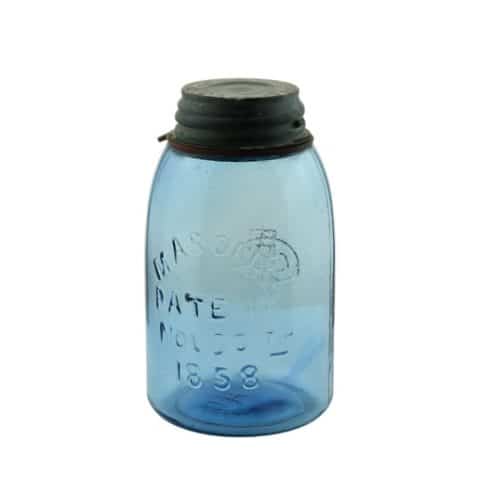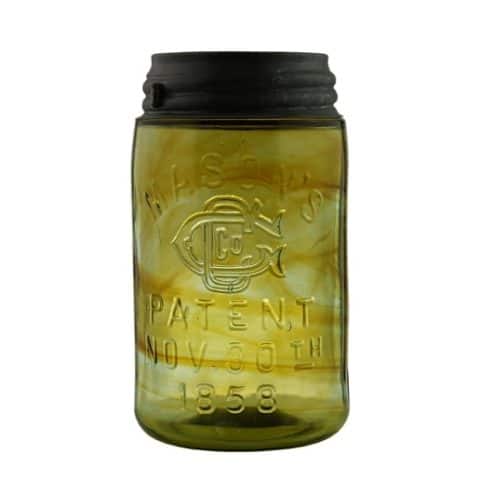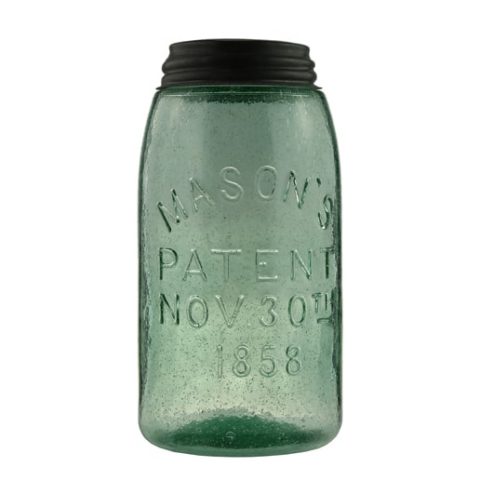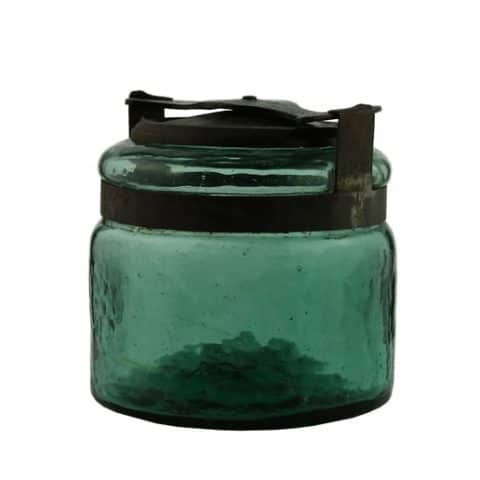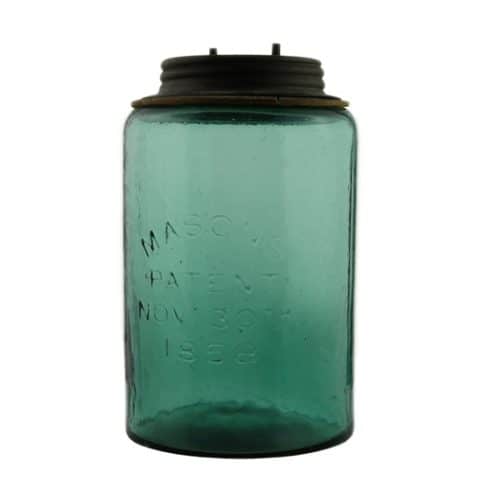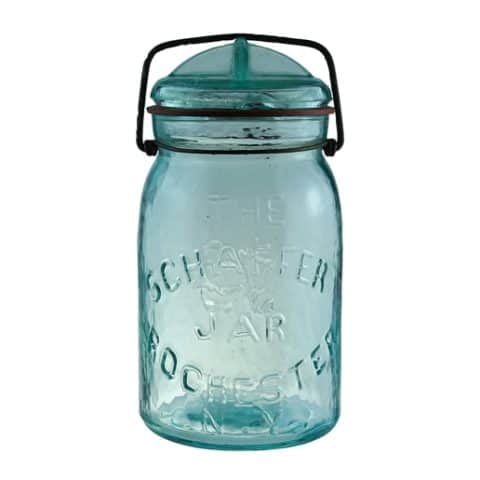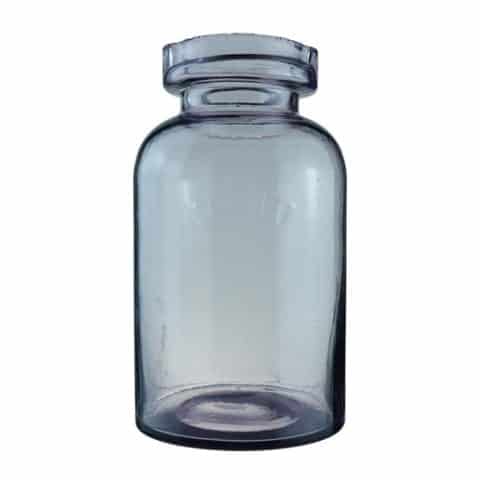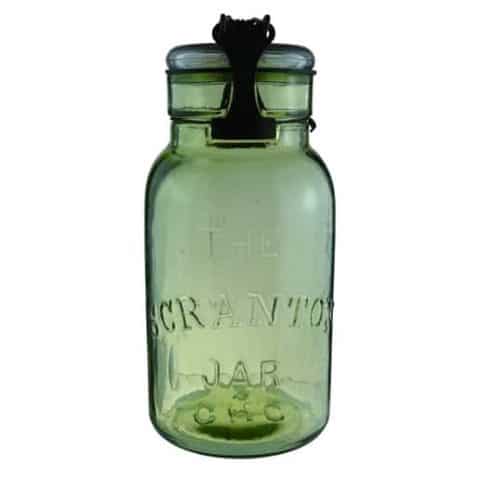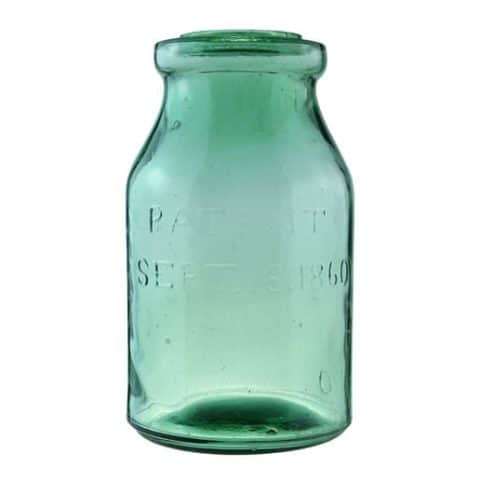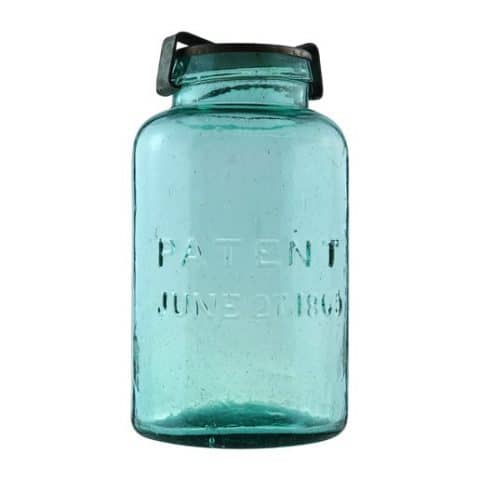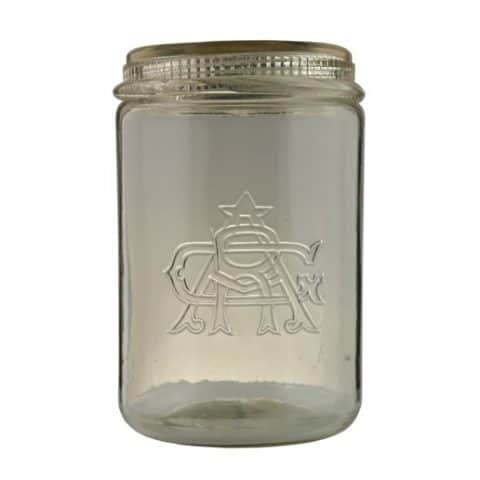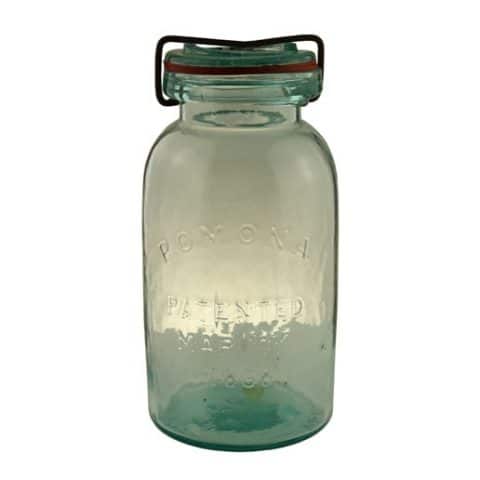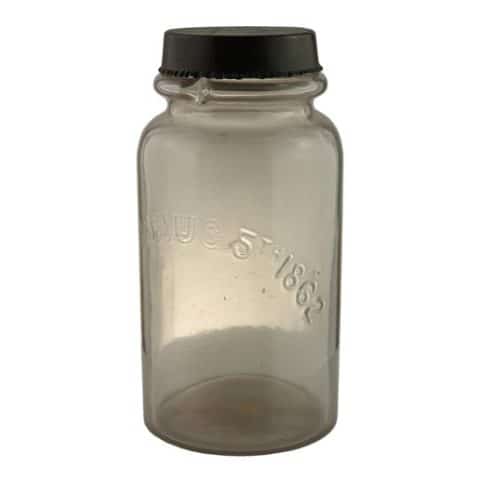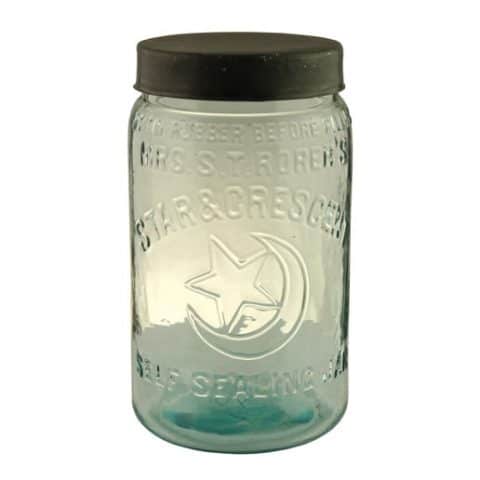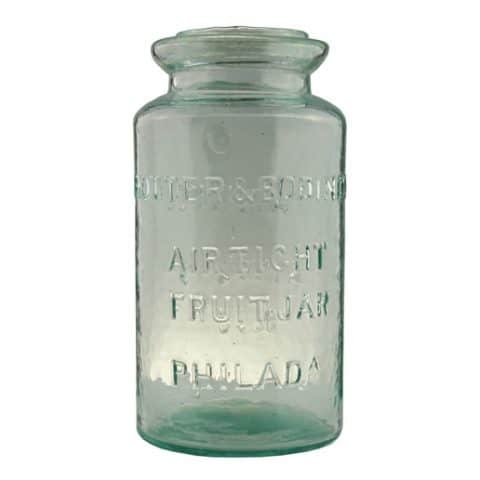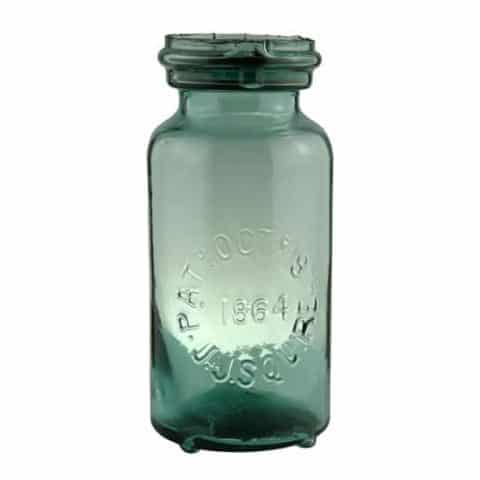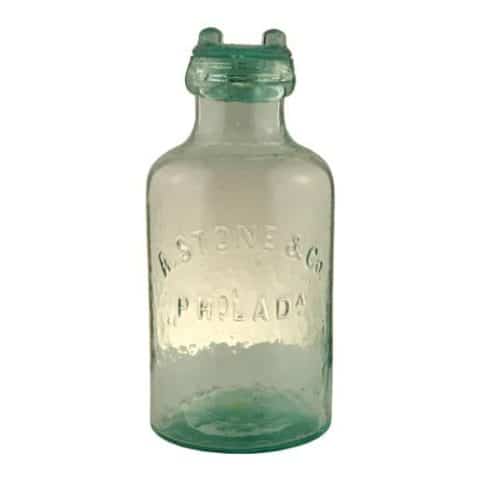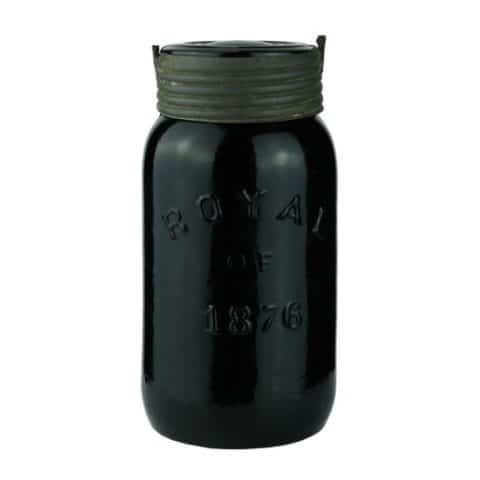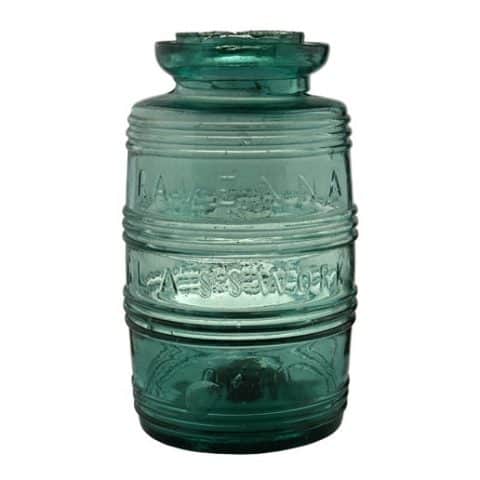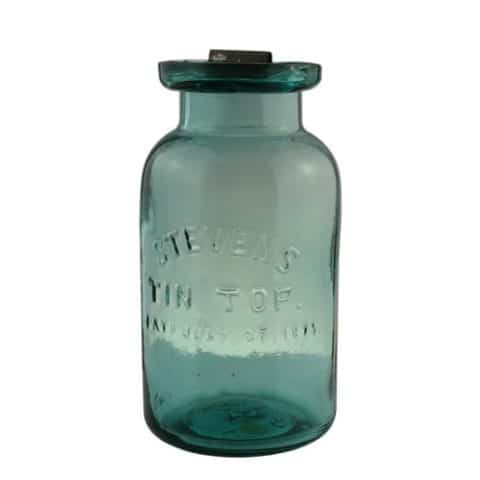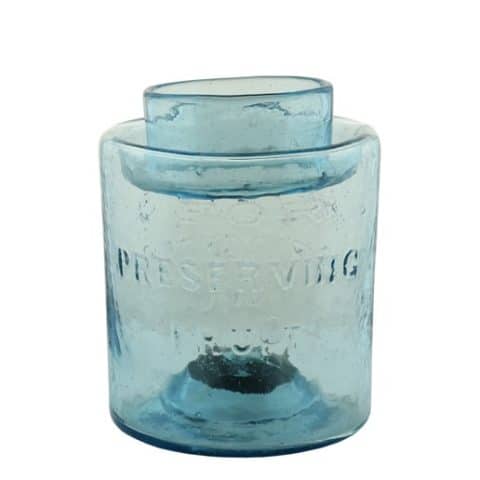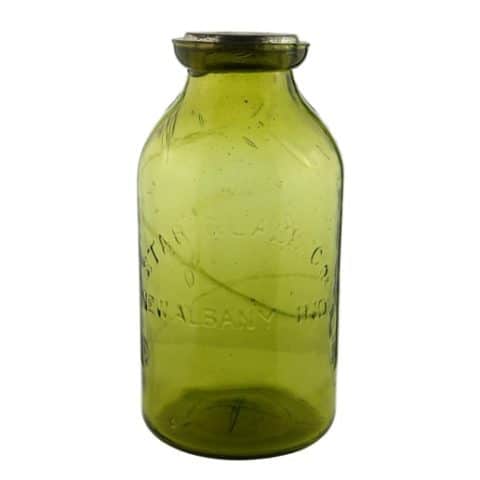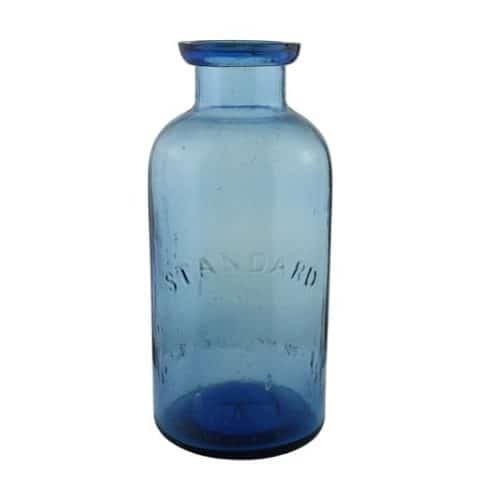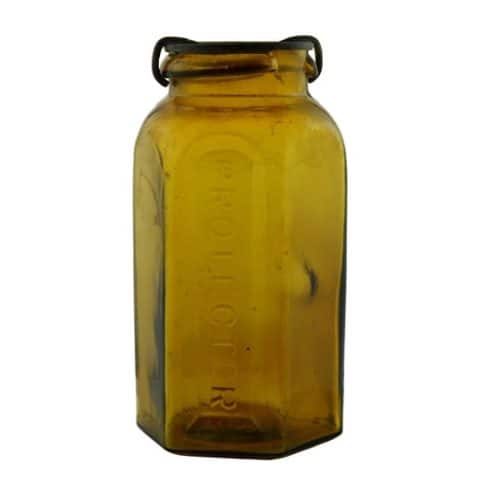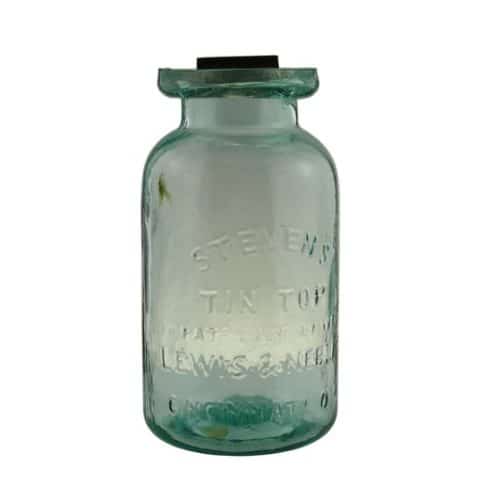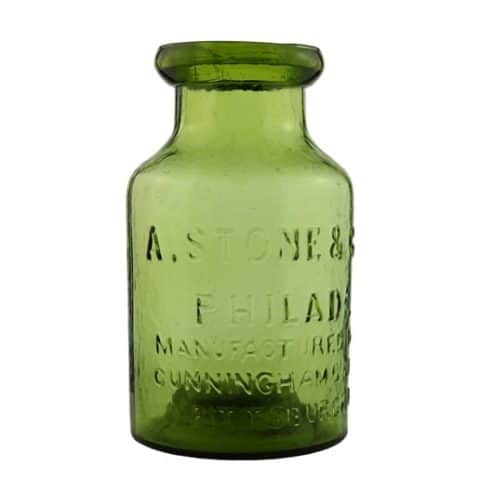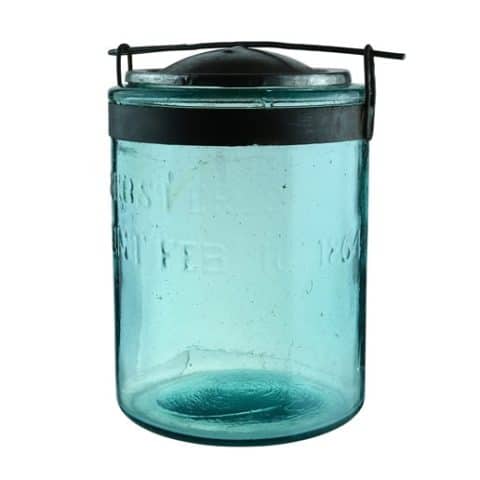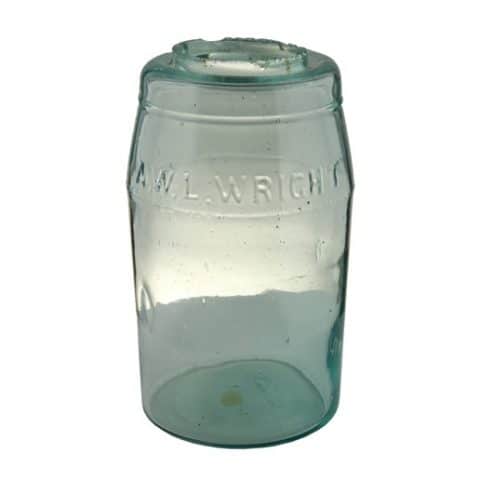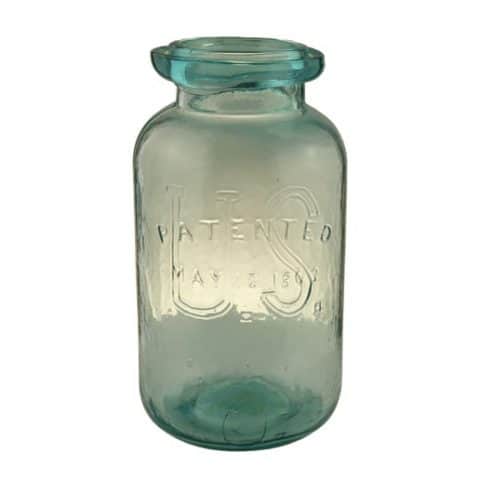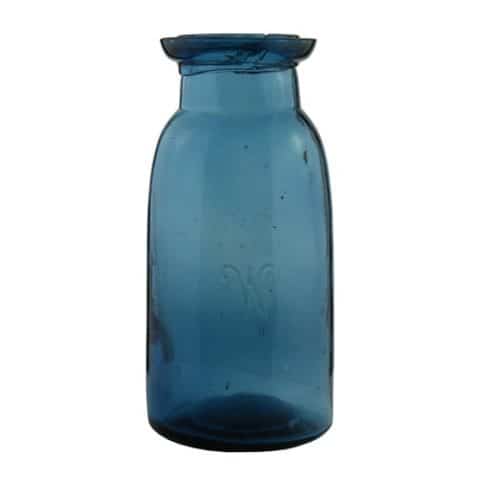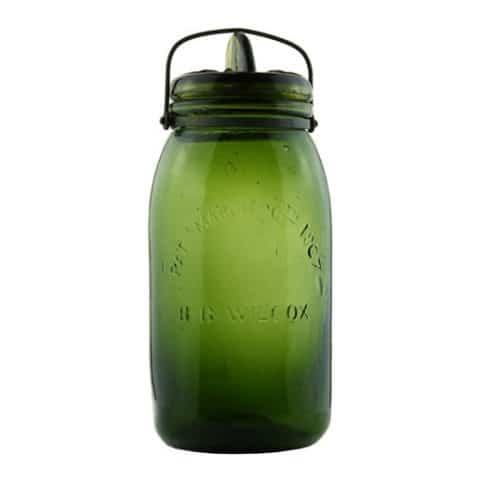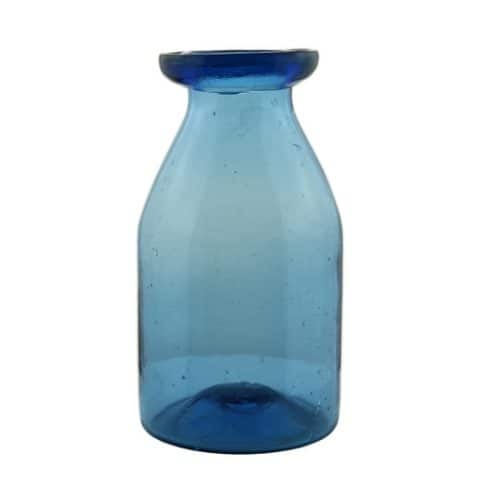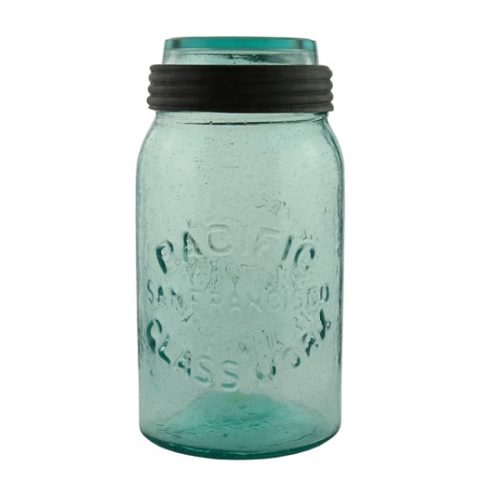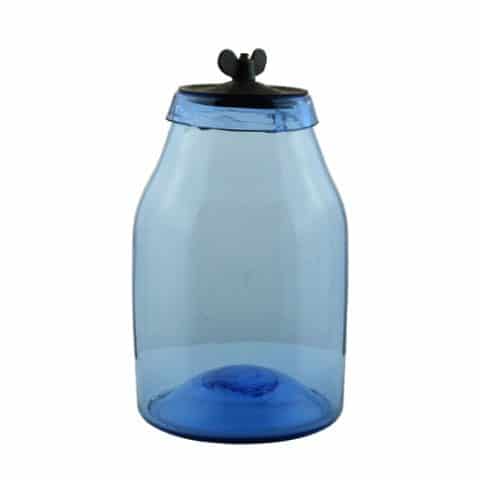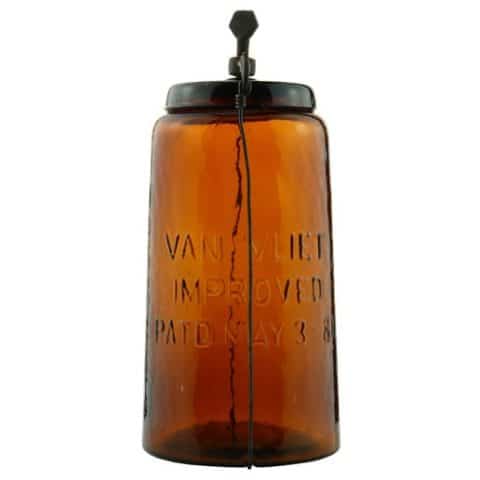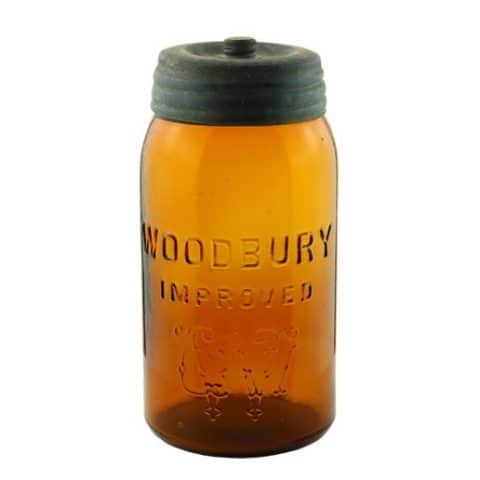Helme’s Rail road Mills Jar
Helme’s Rail road Mills Jar
George W. Helme, Helme’s Rail Road Mills Company, Helmetta, N.J.
Cumberland Glass Works, Bridgeton, New Jersey
Olive Yellow Quart
Provenance: Jerry McCann Collection
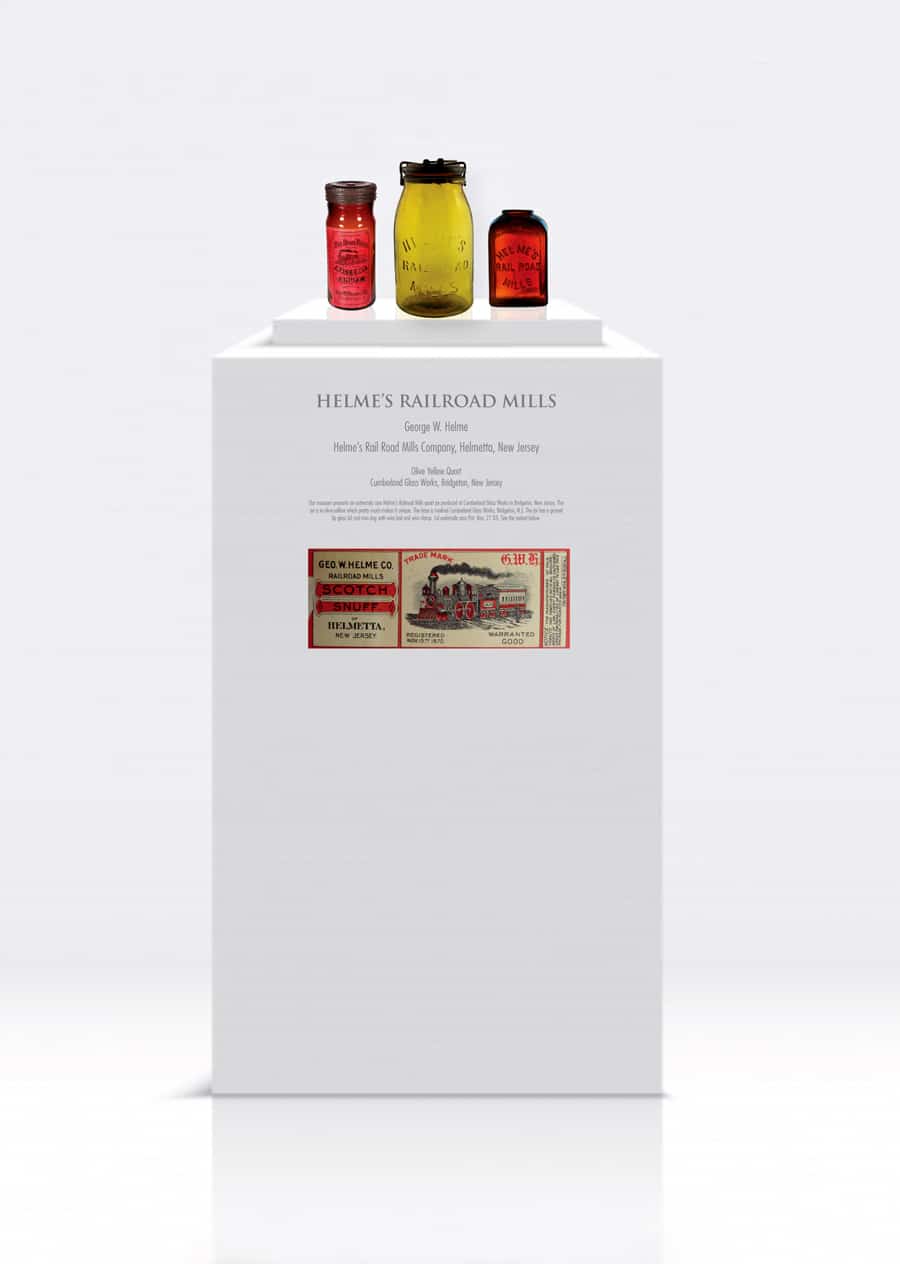
Our museum presents an extremely rare Helme’s Railroad Mills quart jar produced at Cumberland Glass Works in Bridgeton, New Jersey. The jar was made in olive-yellow glass which makes it unique at this point in time. The face of the jar is embossed in three lines, ‘HELME’S’ (1st line convex arch), ‘RAIL ROAD’ (2nd line horizontal), and ‘MILLS’ (3rd line concave arch.) The base is marked “Cumberland Glass Works, Bridgeton, N.J.” The jar has a ground lip glass lid cast iron ring with wire bail and wire clamp. The lid underside says “Pat. Nov. 27 83.” This refers to the J. L. De Steiger Fruit Jar Patent No. 288,983, Patented Nov. 27. 1883.

George W. Helme
George Washington Helme was born in Kingston, Pennsylvania. As a young man, George Helme obtained a clerkship with Asa Packer, a wealthy contractor involved in the construction of locks, boats, and railroads for the transport of coal (and who eventually founded Lehigh University). In his mid-twenties, Helme resigned his position with Mr. Packer and moved to Louisiana, where his older brother Samuel was living. There he studied law and was admitted to the bar in New Orleans around 1851, subsequently establishing his own law practice, which he continued until the outbreak of the Civil War. He returned north to marry Margaret Appleby in 1856 in Spotswood, New Jersey. Margaret was the daughter of Leonard Appleby who founded Railroad Mills in 1825.
See museum example of Leonard Applyby Rail Road Mills Snuff bottle
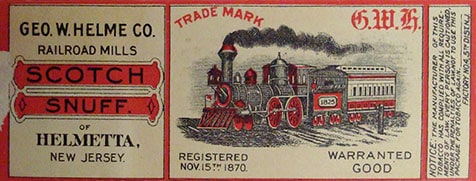
Helme left his law practice and enlisted in the Confederate States Army on March 8, 1862, in New Orleans as a Captain in the Crescent Regiment, commanding Company G, Marion Rangers, nicknamed the Ruggles Guards. The regiment went immediately to Corinth, Mississippi, to reinforce General P. G. T. Beauregard’s army. On April 6, 1862, the regiment played an important role in the capture of two Federal divisions during the Battle of Shiloh. The regiment commander’s report of the engagement cited Captain Helme as “among the line officers I have great satisfaction in mentioning … as distinguished for coolness, bravery, and the faithful discharge of their duty…” The regiment was disbanded on June 3, 1862, at the expiration of its 90-day enlistment, most of the men being transferred into the 18th Louisiana Regiment.

When the war ended, Helme returned north, to New Jersey and New York City, where he engaged in the real estate business for several years, acquiring considerable property. In 1866 he formed a co-partnership with his brother-in-law Jacob Appleby, for the manufacture of snuff and tobacco. This lasted until 1877 or 1878, when Helme became the full owner of the enterprise, eventually renamed the George W. Helme Tobacco Company, and one of the largest snuff producers in the country.
During the middle 1880s, he purchased land between Spotswood and Jamesburg, New Jersey on which his mill and 105 homes for workers were built. This area, initially known as Railroad Mills, became Helmetta, New Jersey, and was reputedly named after his youngest daughter Olivia Antoinette, whose nickname was Etta.
Helme died in 1893 in Helmetta, aged 71, of a heart attack. A special car of the Pennsylvania Railroad left Jersey City for the benefit of those wishing to attend the funeral services. The Camden Post (Camden, New Jersey) reported that 1,500 persons attended. The funeral procession of almost 500, some in horse-drawn carriages, some walking, made its way south to nearby Fernwood Cemetery in Jamesburg, where he was buried in the Helme Mausoleum, the largest in the cemetery, located on the highest point of the ground. He was reported to have been the second wealthiest man in the state.
Primary Image: Helmes Railroad Mills Jar imaged on location by Alan DeMaison, FOHBC Virtual Museum Midwest Studio
Support Image: Auction Lot 8456: HELMES RAILROAD MILLS Snuff Jar with original label, 22 oz approximately, Color: Dark amber, Closure: original, Appearance: shiny glass, Condition: glass has no damage, label condition is shown, Embossing: strong, Base: unmarked, Age: early 1900’s (smooth lip finish), Availability: scarce with original label – Greg Spurgeon – North American Glass
Join the FOHBC: The Virtual Museum is a project of the Federation of Historical Bottle Collectors (FOHBC). To become a member.

